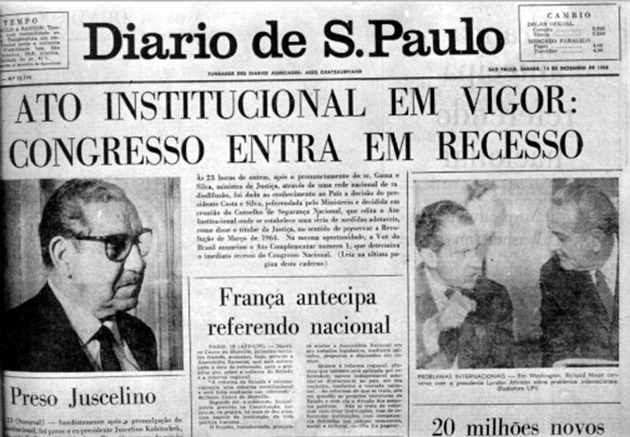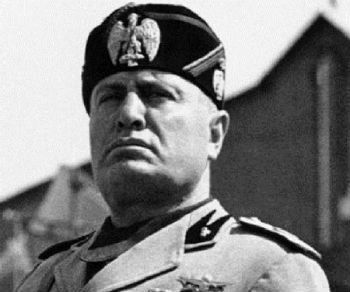World War I was one of the greatest conflicts in the history of civilization. Held especially on European territory, the war involved countries around the world and left more than 10 million dead.
The conflict was the result of several disputes between European countries, which intensified in the late nineteenth and early twentieth century. The two groups that fought during the war went to Triple Entente and the triple alliance.
 Soldiers in front of tank used in World War I.
Soldiers in front of tank used in World War I.
Among the reasons for the conflicts were the imperialism it's the nationalism of European countries. The Triple Entente countries wanted to maintain their hegemony and the Triple Alliance countries wanted to increase their power.
As a result of this great war, there was a redefinition of the borders of Europe and a totally fragile political, economic and social situation, especially in the losing countries - Triple Alliance.
The devastating results of the end of the war, particularly in Germany, were one of the reasons for World War II, which broke out 20 years later.
When was World War I?
World War I started in July 1914, after the assassination of Archduke Franz Ferdinand of Austria-Hungary, and ended in November 1918, with the surrender of the Triple Alliance countries.
Which countries were leading the First World War?
The countries leading the war were divided into two groups, which were the result of the alliances that formed on the continent before the outbreak of the first war.
triple alliance
- Germany
- Austria-Hungary
- Italy (then switched to the Triple Entente)
- Turkish-Ottoman Empire
Triple Entente (victorious group)
- France
- England
- Russia
Despite being these countries in the conduct of the conflict, this was a war with the involvement of countries from all continents.
Italy started the war on the side of the Triple Alliance. The country had made an agreement with Germany that it would officially enter the war if German territory was invaded, but as this did not happen, Italy remained in a neutral position.
It so happens that, in 1915, England offered Italy territories and colonies in Africa if it joined the Triple Entente side. Italy accepted the proposal and changed sides in the conflict, but ended up not receiving the territories later.
Causes of the First World War
The end of the 19th century in Europe was known as belle epoque, a period of prosperity, with numerous technological, scientific and cultural advances.
However, behind this situation of peace and progress, many conflicts were being fought between European countries, whose main motivation was imperialist disputes and the nationalism.
Understand what was the belle epoque.
imperialist disputes
England and France had several lands and colonies in Africa and Asia, but Germany and Italy also had an interest in increasing their imperialist power.
With the unification of Germany after the Franco-Prussian War, this nation became more powerful and represented a strong threat, especially to England, which occupied the place of great power since the Industrial Revolution.
know more about imperialism.
nationalisms
The nationalist feeling was strengthened in several regions of Europe, the Germans united in the pangermanism, a movement that built an ideology to support the expansion of the German Empire.
Russia, in turn, defended the paneslavism, which intended to create a state with all Slavic peoples and, for that, wanted to annex territories then belonging to the Turkish-Ottoman and Austro-Hungarian Empires.
Serbia supported Russia in the Paneslavist idea and wanted to annex Balkan territories to form Greater Serbia.
On the issue of nationalism there was also the french revenge against Germany. A few years earlier, France had lost an important part of its territory to Germany in the Franco-Prussian War: Alsace-Lorraine.
This loss was considered a humiliation for the French, who wanted to regain that territory again.
Faced with these imminent conflicts, countries start to form alliances and starts a arms race. States begin to strengthen their armies and their military power due to the threat of a war.
know more about nationalism.
The beginning of the First World War
The tension between the countries was great and a war was armed, it only needed a fuse for the conflict to start.
This trigger was the assassination of Archduke Francisco Fernando, the heir to the throne of Austria-Hungary. Fernando was killed by a Serbian nationalist during a visit to Saravejo, capital of Bosnia.
Given this event, the Austria-Hungary declares war on Serbia on July 28, 1914 and so, begins the First World War.
Based on the alliances already forming on the continent, Germany entered the war on the side of Austria-Hungary. Russia, France and England joined Serbia's side.
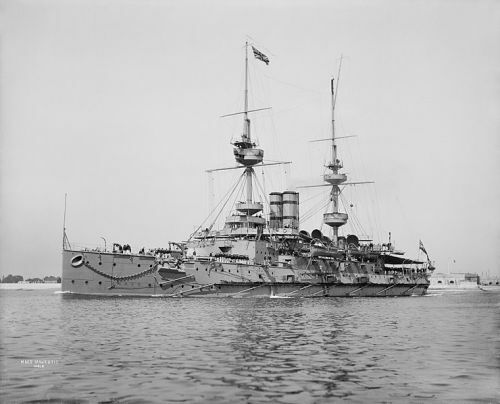 British ship in World War I.
British ship in World War I.
the conflict
By the time the conflicts started, the countries were already prepared for war, but both sides believed that the conflict would be short-lived. At the beginning of the conflict there was movement of troops, then they stagnated in trenches.
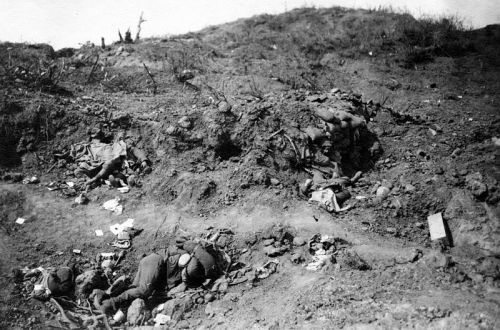 Battlefield in the First World War.
Battlefield in the First World War.
World War I can be divided into two phases:
- Movements: in this first phase, armies advanced towards the borders of their respective countries, to occupy the fronts.
- Trenches: the second phase of the conflict was the trench phase. The trenches were long underground corridors built to house the troops, some trenches hundreds of kilometers long. The soldiers stayed for about 3 years living in these trenches, where living conditions were terrible. Within these corridors there were lice, rats and even decaying bodies.
 Soldiers in trenches.
Soldiers in trenches.
The technological advance of belle epoque allowed the use of weapons such as tanks, planes and machine guns during the conflict. The war was a very violent conflict, one of the examples of the weapon used was mustard gas.
O mustard gas is a chemical weapon that causes severe burns, can cause cancer and death from suffocation. This gas is prohibited and is classified by the Chemical Weapons Convention as Class 1 and has no use other than in chemical warfare.
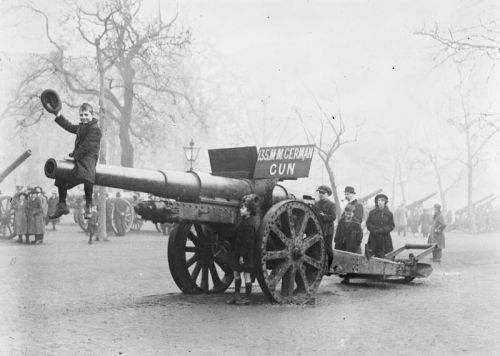
The submarine was also another equipment used in the war. It was the Germans who developed submarines, they used them to sink ships that brought food into enemy territory.
In 1917, two important events took place that contributed to the end of the conflict: Russia's exit from the war and the United States' entry into the conflict.
exit from russia
In 1917, with its economy in ruins, the Russian revolution and the implementation of communism in the country. To withdraw from the war, Russia signed an agreement with Germany.
For Germany, the departure of Russia was a relief, as the country can withdraw its troops from front of battle on the border between these territories and focus their efforts on the others fronts.
Entrance from the United States
In 1917 the United States enters into conflict with soldiers and medical troops in support of the Triple Entente countries - England and France. With Germany already weakened, the entry of the United States was decisive for the surrender of the Germans and the end of the war.
The end of conflict and the Treaty of Versailles
The war ended in 1918 with the defeat of Germany and the victory of the Triple Entente. At the end of the war, the Paris conference, where the Treaty of Versailles between Germany and the victorious countries.
The Treaty of Versailles was a peace agreement that placed Germany as the sole and total blame for the conflict and established harsh punishments for the country.
 Delegations during the signing of the Treaty of Versailles.
Delegations during the signing of the Treaty of Versailles.
This treaty limited the production of arms and the German army, forced the country to return colonies in Africa and the territory of Alsace-Lorraine to France, in addition to the obligation to pay indemnities extremely high for the winning countries.
These conditions were considered humiliating by the Germans, who at the end of the conflict were facing serious economic problems in the country. This situation generated revolt among the population and was one of the reasons for the outbreak of World War II and Nazism.
Learn more about Treaty of Versailles.
League of Nations
After the end of the conflict, in 1919, the League of Nations was created, an international organization with the aim of establishing peace and preventing new conflicts. His goal, however, was not achieved, as 20 years after the end of World War I, the world would be involved again in a global conflict.
Know the causes of Second World War.
Aftermath of the First World War
- Redefinition of borders in Europe and other continents. The Turkish-Ottoman Empire, the Austro-Hungarian Empire and Serbia were divided into several countries;
- More than 10 million dead and 20 million mutilated and wounded;
- Economic and social crises with unemployment, hunger and misery and destruction of cities in the countries involved;
- With the death of many men, women start to take more important places in society and the suffrage movement has strengthened;
- Decline of Eurocentrism and the rise of the United States as a power;
- Rise of far-right movements such as Nazism in Germany and Fascism in Italy.
 Map of Europe in 1923, after the end of the First World War.
Map of Europe in 1923, after the end of the First World War.
know more about fascism and meet your characteristics.
Brazil in World War II
Brazil had a small and belated participation in the conflict. O Brazil declared war on Germany in 1917, after a German submarine sank a Brazilian vessel. Brazil sent a naval division to Europe, assisted in air combat and sent medical troops to help treat the wounded.
Throughout the conflict, with the reduction in the export of Brazilian products to Europeans, the Brazilian economic situation is harmed. The country also needed to invest in industrialization internally, as it could no longer import from Europe.
See also the meaning of Nazism and meet the types of war.

